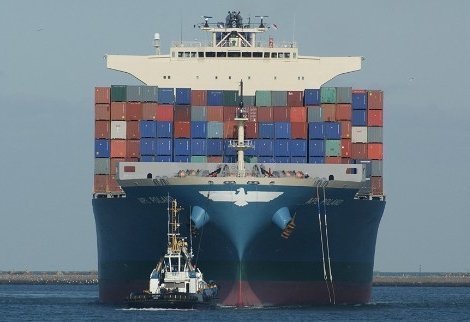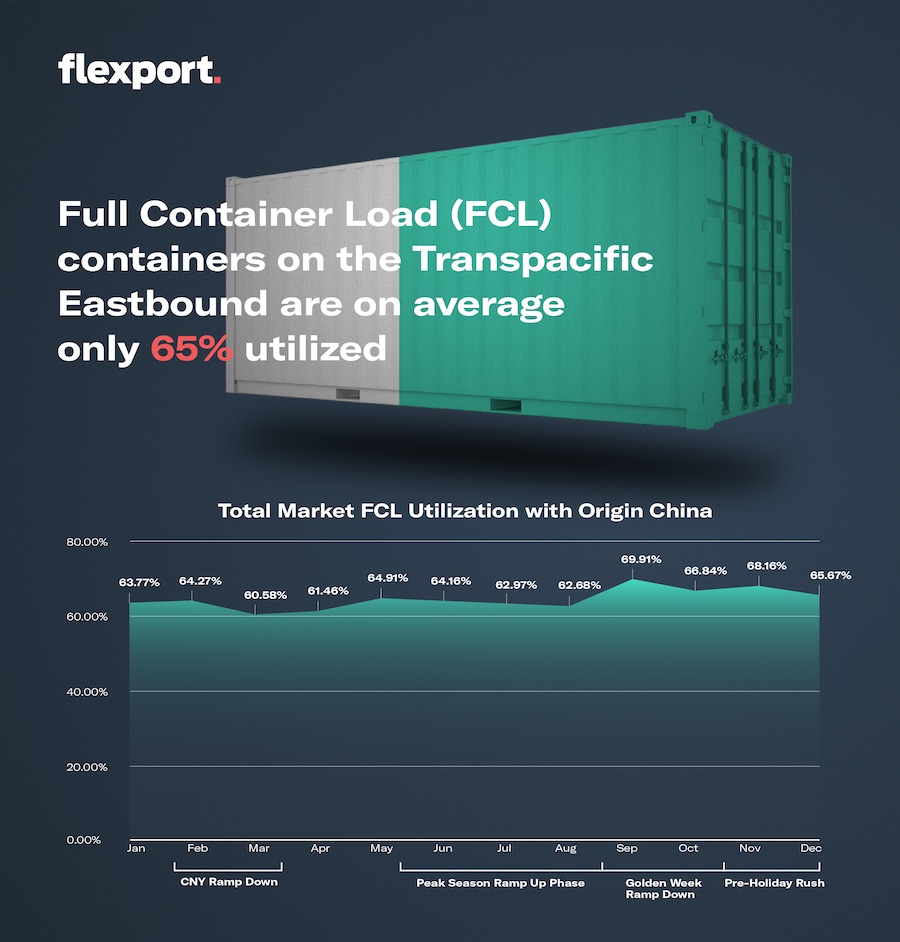Flexport debuts box sharing app

Flexport, the American digital freight forwarder, has sought to fix one of container shipping’s great inefficiencies. The company has launched OceanMatch, an ocean freight offering, which is essentially a box sharing app that matches unused space in a container with other Flexport cargo.
Full Container Load shipping (FCL) is a misleading term as Flexport data shows. The company analysed 2018 data for US box imports and found that on average, only 64.6% of FCL containers were fully utilised. Put another way, nearly half the container space of all FCL shipments last year destined to the US were unused, which Flexport said in a release creates “incredible inefficiency” in global supply chains.
OceanMatch is a cargo consolidation solution exclusively offered by Flexport, which matches shipments’ specific weight and volume, lane, and cargo ready date using the company’s global network of structured supply chain data to consolidate cargo and fully utilise each container.
OceanMatch only takes an average of one or two days longer to destination than FCL, while traditional LCL takes up to a week more. OceanMatch shipments also save up to 35% on cost compared to FCL, Flexport claims.
“Underutilizing containers means that there are more containers being moved over the ocean, rail, and road than necessary – significantly contributing to a spike in shipping costs, port congestion, truck and chassis shortages, and pollution,” Flexport stated in a release.
Commenting on the news, Andy Lane, director of Asia for SeaIntelligence Maritime Analysis, told Splash that genuinely full containers are unrealistic. US imports typically cube-out before they weigh-out. The internal capacity of a 40ft 9’6″ box is 76 cu m, but unless loading lots of very small packages, or goods are packaged specifically to fill a container perfectly, in reality utilisation in excess of 85 to 90% is impossible. However, even if there is an extra 15-20% unused capacity in each box, that is still significant, Lane said.
Lane warned that if cargo is mixed with other cargo which will not clear customs for days, that could create sudden supply chain disruption.
Nevertheless, crunching the numbers, if Flexport’s innovation were to take off, liners should be worried, Lane said.
“If the US in totality imports 21m teu per year, Flexport will reduce demand by 7.3m teu per year. How many more ships do we need?” Lane said.

